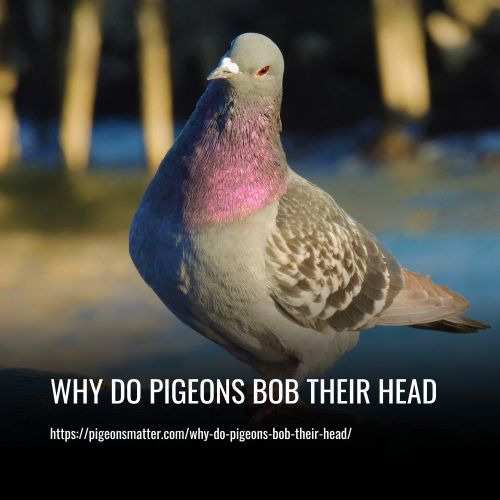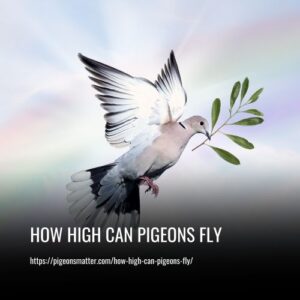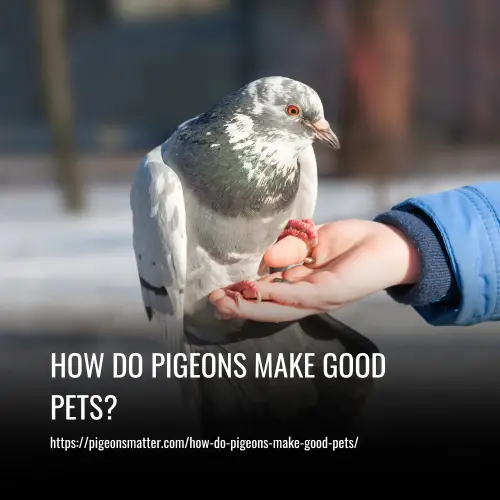There are a few theories as to why pigeons bob their heads when they walk. Some believe it helps with balance, provides depth perception, or sharpens their vision. However, studies suggest that birds bob their heads to stabilize their visual surroundings while in motion. This is different from humans, who rely more on eye movements to catch and hold images while moving.
In experiments conducted by Dr. Barrie J Frost and Dr. Mark Friedman, it was found that head bobbing in birds is more influenced by visual stimulation than body movement. Scientists are still researching why some birds exhibit head bobbing while others do not.

Possible Reasons Why Pigeons Bob Their Heads
Birds move their heads for different purposes, including maintaining clear vision which is important for tasks like avoiding predators, finding food, and interacting with other birds. Additionally, some birds may use their head movements as a form of communication with other birds.
1. Visual processing
The landmark treadmill experiment conducted by researchers revealed that pigeons use head-thrusting to stabilize their view of the moving world around them. If the bird’s visual surroundings remained stationary while it was on the treadmill, its head didn’t bob, leading to the central discovery.
By keeping their heads still during the ‘hold’ phases, pigeons can avoid blurred images caused by motion. This way, the bird can visually process its surroundings while waiting for its moving body to catch up, providing a momentary pause in the motion. This tactic is beneficial for spotting potential food and enemies.
2. Prey Detection
Researchers have discovered that pigeons of prey, including hawks, eagles, and owls, use head movements to detect their prey. The American hawk species, in particular, have been found to use distinct head movements based on their hunting techniques and habitats.
Cooper’s hawks exhibit greater head movements during hunting in cluttered habitats compared to red-tailed hawks hunting in open habitats. This is because Cooper’s hawks need to move their heads more to detect prey in their environment. Understanding these behaviors can help researchers and bird enthusiasts better understand these fascinating birds of prey.
3. Courtship
Head bobbing in birds can have different meanings depending on the species. In some Pigeons, head bobbing is not related to vision but rather to mating. Mallard ducks, on the other hand, use head bobbing as part of their courtship behavior.
Male and female mallards engage in head-bobbing behavior, which commonly occurs before mating. Understanding the different behaviors and gestures of birds can help us better appreciate their unique ways of communicating and interacting with each other.
4. Territorial Displays
Head bobbing is a behavior used by Northern flickers for communication, especially in agonistic situations rather than romantic ones. Both male and female flickers may use this behavior, but it is often seen in males competing for the attention of a female. This behavior is an important aspect of their social interactions and plays a significant role in their mating rituals.
5. Swallowing Food
Pigeons and other birds have different methods of consuming their food, depending on the type of beak they have. Pigeons, for example, need to swallow their food whole if it’s too tough to peck into smaller pieces. This is because their beaks are not sharp enough to break down tougher foods.
Predatory birds like herons, cormorants, seagulls, and owls, on the other hand, have sharp bills that enable them to tear apart their prey. However, even these birds may need to bob their heads vigorously to swallow larger meals. This is because their throats are relatively narrow, and they need to use gravity to help move the food down.
What Does It Mean When A Pigeon Bobs Its Head
Pigeons may appear intimidating when they bob their heads at people, but it is simply a natural behavior that serves a purpose. They bob their heads to assess whether a person is a threat and out of curiosity.
By doing so, they can gather information from multiple angles and distances, giving them a better understanding of their surroundings. This behavior is common among birds and is used as a tool for survival.
So, the next time a pigeon bobs its head at you, remember that it’s just trying to get a better look at you and determine whether you pose a threat.
Which Pigeons Bob Their Heads
Head-bobbing is a behavior commonly observed in Pigeons and doves (Columbidae family), but many other bird species also exhibit this amusing movement while walking. Some of these birds include Quails, Turkeys, Chickens, Herons, Cranes, Starlings, and Crows.
While hopping birds like Sparrows don’t typically bob their heads while walking, it’s a fascinating behavior to observe in the birds that do. Starlings, for example, can often be seen walking along the ground while bobbing their heads.
Do Pigeons Bob Their Heads to Music
Pigeons are not the only birds known for bobbing their heads. Other popular pets like parrots, cockatoos, and budgerigars also exhibit this behavior. The bobbing is often thought to be a way to attract attention, but some birds from this family actually have rhythm.
Studies conducted at Harvard University have found that African grey parrots and sulfur-crested cockatoos have the ability to move in time with the music. This remarkable ability to mimic sounds is believed to be important for their ability to “dance.” While this behavior has not yet been observed in wild Pigeons, it is intriguing to consider the possibility that they too may have some rhythm.
FAQs
Yes, most pigeons exhibit head-bobbing behavior, although the frequency and extent of the bobbing can vary between individuals.
No, head-bobbing is also common among other bird species. It is seen in birds that rely heavily on vision for tasks such as foraging and detecting predators.
Not necessarily. While head-bobbing can be a part of courtship displays and social interactions among pigeons, its primary function is related to visual stabilization.
In addition to visual stability, head-bobbing may also aid in depth perception, allowing pigeons to accurately judge distances and navigate their environment.
In some cases, excessive or abnormal head-bobbing could be a symptom of health issues, so it is important to monitor a pigeon’s overall behavior and seek veterinary attention if there are concerns.
No, head-bobbing in pigeons is a natural and instinctive behavior. It is not something that can be taught or trained in the same way as other behaviors in domesticated pigeons.
Yes, pigeons may bob their heads as they walk, especially when they are focusing on a particular object or trying to gauge distance. It is a natural part of their movement and behavior.
Head-bobbing in pigeons may also serve as a way for them to maintain balance while moving, especially when they are walking on uneven or unstable surfaces.
Conclusion
While the exact reason why pigeons bob their head may still be up for debate, one thing is for sure: these birds are fascinating creatures that deserve our admiration. Whether they’re bobbing their heads to keep their vision steady, communicate with other pigeons, or simply because it feels good, we can all agree that watching them in action is a sight to behold.
So, the next time you see a pigeon bobbing its head, take a moment to appreciate the wonder of nature!

